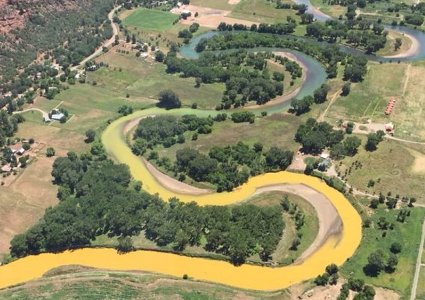Polling

Suggest an important issue not listed in this sub-category (). (Maximum 60 Characters)
Hardrock mining

Each year, hardrock miners use millions of gallons of cyanide to extract metals such as gold, copper and zinc from rock and ore. Hundreds of tons of cyanide are sometimes needed at a single site to carry out this process. Using the open-pit method, ore is piled into pits and sprayed with cyanide to separate metal from rock. The resulting cyanide ponds often result in leakage or spillage which may contaminate surrounding watersheds. Other methods immerse ore into cyanide-filled tanks which are less prone to releases. However, just one teaspoon of a 2% cyanide solution can kill a person while smaller doses can kill wildlife and fish. Since 1970, it is estimated that accidents by our hard-rock mining industry have resulted in billions of gallons of cyanide being leaked and spilled into the environment. Often, local hazardous waste laws do not regulate the use of such large amounts of this highly toxic substance.
Advocates claim the use, transport and disposal of millions of gallons of cyanide hold disastrous potential for many American communities. Such accidents have destroyed entire river ecosystems in Idaho, Montana and Colorado when this deadly chemical breeched containment. The 2015 Gold King Mine waste water spill was an environmental disaster, caused by an overflow of a holding pond, that spilled three million gallons of mine waste water and tailings including cadmium, lead, arsenic, beryllium, zinc, iron and copper into Colorado River watershed. Since 1990, releases of cyanide from mining accidents have most often occurred from tailings-dam mishaps (76%), followed by pipeline failures (18%) and transportation accidents (6%). The EPA estimates that 40% of the watersheds in the western United States are contaminated by pollution from hard rock mines.
Proposed legislation: Reintroduction of H.R.2579 - Hardrock Leasing and Reclamation Act of 2019
Prospective Sponsor: Rep. Raul Grijalva (AZ)
Advocates claim the use, transport and disposal of millions of gallons of cyanide hold disastrous potential for many American communities. Such accidents have destroyed entire river ecosystems in Idaho, Montana and Colorado when this deadly chemical breeched containment. The 2015 Gold King Mine waste water spill was an environmental disaster, caused by an overflow of a holding pond, that spilled three million gallons of mine waste water and tailings including cadmium, lead, arsenic, beryllium, zinc, iron and copper into Colorado River watershed. Since 1990, releases of cyanide from mining accidents have most often occurred from tailings-dam mishaps (76%), followed by pipeline failures (18%) and transportation accidents (6%). The EPA estimates that 40% of the watersheds in the western United States are contaminated by pollution from hard rock mines.
Proposed legislation: Reintroduction of H.R.2579 - Hardrock Leasing and Reclamation Act of 2019
Prospective Sponsor: Rep. Raul Grijalva (AZ)
Poll Opening Date
November 11, 2024
Poll Closing Date
November 17, 2024
Democracy Rules respects the privacy of your information.
See PRIVACY STATEMENT
See PRIVACY STATEMENT